

M. Ali Kapadia
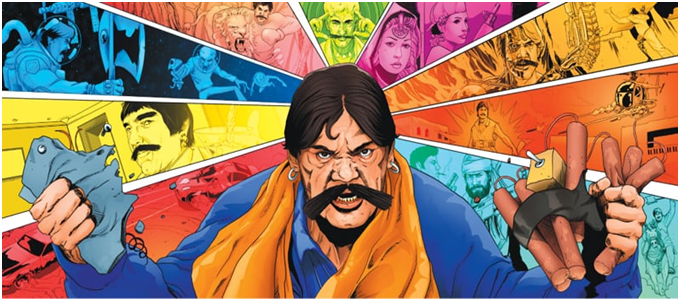

Artwork: Wasiq Haris
History repeats itself, often in unlikely places. Such is the parity between Gotham’s Batman and
Gujranwala’s Maula Jatt. I depicted their uncanny similarities first in a 2015 essay, and later in
a 2016 viral mashup video of The Dark Knight’s trailer.
Each story circles two eccentric misfits pushing each other’s psychosis. Like the Joker, Noori is
a laughing nihilist exuding ‘What doesn’t kill me makes me stronger.’ Like the Batman, Maula is
an idealist orphan fighting to bring justice to his hometown; a fearless vigilante blocking Noori,
threatening him … fascinating him.
It’s such ideological face-offs that make superhero stories modern folklore, told and retold as
sequels and reboots. When I learned that a reboot of the Maula Jatt franchise was in the works,
I was both excited and concerned. Excited, because I see Maula Jatt as a half-baked superhero
now in the hands of some talented filmmakers. Concerned, because I could only imagine two
approaches at the filmmakers’ disposal; both with pitfalls.
The first is a purist approach. A reboot is a remake with changes to garner fresh interest. A purist
approach would change appearances: extravagant sets, modern cinematography etc but not the
ideology. The story and characters would emulate that same old ethos, amplifying the same
message. To put it mildly, such allegiance to the original Jatt films would be as tasteless as stale
pakoras. Beneath their crumbling layers, these films push toxic masculinity like it’s going out of
style; glorifying brute force and violence as attractive male traits. For instance, in the prequel
Wehshi Jatt (1975), when a woman furiously rejects the sleazy advances from our hero’s sidekick,
he slaps her so hard she rolls and falls, then turns and surprisingly thanks him for breaking her
pride, tenderly confessing her undying love for him. In another instance, our heroine falls in love
with Jatt without even meeting him — ?not because she learns he’s “sadiq aur ameen”, but because
he slashes a bunch of villagers, stabbing one to death.
Will the makers of the Maula Jatt reboot take a purist approach or a
revisionist one? M. Ali Kapadia offers a way out of the pitfalls of both
approaches, taking inspiration from comic book multiverses ...
On the receiving end, Maula Jatt and Noori Natt can be shot over and over till they’re drenched in
blood and the most it seems to do is make them dizzy. Some painkiller and bed rest and these
blokes are jumping around the next day. Jatt can also hear his name miles away and break prison
gates with a push. To all this, no supernatural explanation is ever provided; it is only explained
that Jatt consumes an organic Punjabi diet (Punjabitarian?).
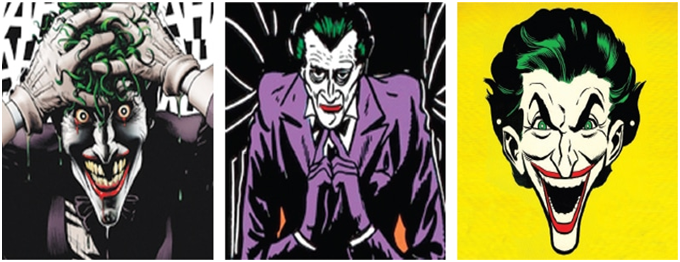
Joker through the ages: Golden, Silver and Bronze
This is how the Jatt ethos functions. These peculiarities, no matter how bizarre, are its innate
characteristics.
Which brings me to the second approach — ?revisionist. Here, the writers would deviate from the
original ethos to better appeal to modern audiences — ?meaning they might end up changing
most of what makes Maula Jatt, Maula Jatt; whether he’s fat, loud, how bullets affect him etc.
Maybe he can’t hear his name miles away; he gets an SMS instead. Maybe he can’t push through
prison gates; he’s an escape artist instead. Maybe the heroine doesn’t fall in love with him for his
violence; she loves him for his charm instead. If so many changes continue, at some point you’ll
have to ask yourself … why is this movie called Maula Jatt?
Maula Jatt (1979) is the most significant film in Pakistan’s history — ?and not for the best reasons.
It isn’t Romeo & Juliet, open for celebratory remixes. This film is the lynchpin that dragged our film
industry into the dark ages of gandasa culture. With revisionism, we’d be going back in time to re-
imagine this tragedy in a better light. I only hope that in doing so, the filmmakers won’t be on
some mission to repair the past.
These were the concerns. If Maula Jatt must be rebooted, its filmmakers must pick their poison.
Which should it be, ideological baggage or historical baggage?
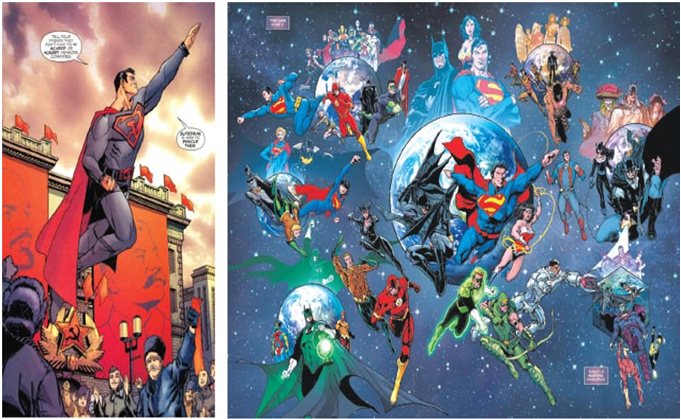
In another universe Superman lives in the Soviet Union and the Justice League are the bad guys
I pondered over this question for days, went for long walks, re-watched all the Jatt films with a
fresh set of pakoras until finally … I saw the answer. It was in front of me all along. There is, in
fact, a third option that’s neither purist nor revisionist. A new approach that isn’t incarcerated by
any baggage, that justifies calling this reboot Maula Jatt while letting it be an entirely different
animal.
Khawateen-o-hazraat … say hello to the multiverse approach.
See, decades ago DC Comics ran
into a similar problem. In their case, they had already rebooted their characters creating many
discrepancies.
For example, in the Golden Age (the ’30s-’50s), the Joker was a rich crime boss with a lair full
of goons. He drove a fancy Joker car, used guns and was a social butterfly with a girlfriend —
Harlequin.
In the Silver Age (the ’50s-’70s), the Joker was a funny, less violent prankster; like a Bugs Bunny
who loves robbing banks. It was a result of the government pressure to make comics tamer.
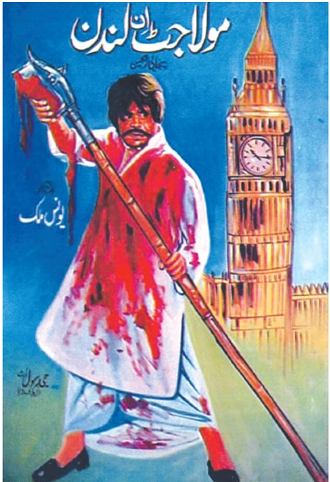
Maula Jatt in London is not where the Jatt multiplicity stops | M. Ali Kapadia
In the Bronze Age (the ’70s-’00s), the Joker is dramatically darker; a violent psychopath obsessed
with the Batman. He doesn’t socialise, avoids guns, loves blades and is out just to make a point.
Obviously, it would be lazy for DC to assert that these three Jokers are the same character. Such
were the discrepancies that prevailed across DC’s other characters. They even had superheroes
from the Golden Age making sexist and racist remarks that their modern versions would never
dare.
DC devised a clever explanation. They proclaimed that the seemingly same characters through the
different ages are in fact different characters living in parallel universes. So there’s one universe
where the Golden Age Batman and Joker are busy fighting, another where the Silver Age ones are
busy pranking, and so on. DC added that there are not just three but infinite universes, each
incrementally varied than the last.
This made for an exciting opportunity to create even more variations of their beloved characters.
For example, they revealed a new universe where the Justice League are the bad guys. And another
where Superman lives in the Soviet Union!
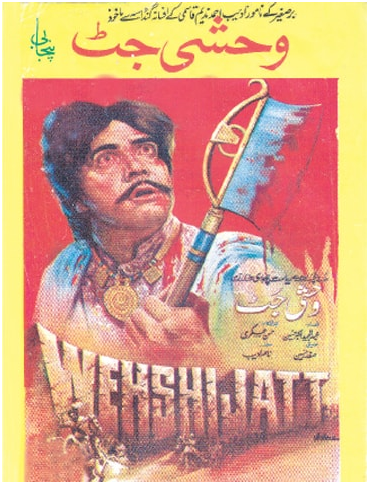
In this 1975 prequel, the heroine falls in love with Jatt just because he slashes a bunch of villagers | Guddu Film Archive
Now I know what you’re thinking … “but Ali, Maula Jatt has nothing to do with this sci-fi multiplicity
stuff!”
Actually … it does. On top of superhero tendencies, the Maula Jatt lore as we know it today already
has strong built-in multiverse tendencies. For this, we don’t have to look further than Maula Jatt’s
own sequel. Here, instead of Superman in the Soviet Union, we have Maula Jatt in London!
Released in 1981, Maula Jatt in London has its own variation of Noori, called Dara — also played by
Mustafa Qureshi. In fact, just as Noori perfectly lines up with the Bronze Age psychopathic Joker,
Dara perfectly lines up with the Golden Age Joker. He’s a socialite crime boss who operates from a
lair full of goons, drives a fancy Rolls Royce and uses a gun, unlike Noori. Dara even has a girlfriend!
Like Wehshi Jatt, this film also has a variation of Roshan named Charaghdeen, played by Afzaal
Ahmed, who also played Roshan in Wehshi Jatt. Charaghdeen keeps steering Jatt away from violence
only to fail at it every time — just like Roshan. The only difference is that Charaghdeen is a rich
London businessman while Roshan is a common Punjabi villager.
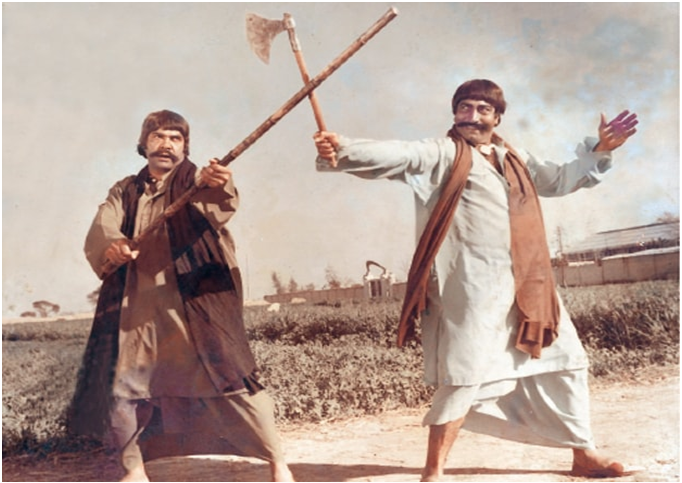
We can even have a universe where Jatt is the villain and Natt is the hero | Guddu Film Archive
The reason I call such multiplicities just tendencies for parallel universes is because the film-
makers do attempt to rationalise them sequentially, only with terrible explanations. For example,
Charaghdeen is explained to be Roshan’s lost identical father. The explanation for Jatt being in
London is that after being convicted of murdering dozens of villagers in the previous film, the
Pakistani courts deem him too dangerous for our nation and send him to Great Britain as punish-
ment. So basically ?if anyone’s having trouble getting a UK visa, try killing some villagers!
Personally, I believe the filmmakers were having a hard time explaining the Jatt lore’s innate
tendencies for multiplicity, just like they had a hard time accepting Jatt as a superhero. Due to
such reservations, the Jatt franchise has always been plagued with ridicule, unlike other super-
hero movies where the world’s extraordinary nature is wholeheartedly exploited.
Maula Jatt in London is not where the Jatt multiplicity stops. It is only the beginning. Since Maula
Jatt’s release till Sultan Rahi’s death in 1996, it is impossible to overlook the Jatt-Natt combo in
almost every other character Sultan Rahi and Mustafa Qureshi played. No matter their roles, their
names remained synonymous with Jatt and Natt because they continued to play some incremental
variation of Jatt and Natt.
This is in line with a multiverse where each universe is incrementally varied than the last. For all
we know, we can even have a universe where Jatt is the villain and Natt is the hero. The universes
revealed so far have already been pretty wild. There was one film where Rahi has the superpower
to control animals and another where Qureshi is Adolf Hitler’s Punjabi son. It just gets wilder and
wilder.
Hence, I theorise that the decades of gandasa culture that plagued and subsequently destroyed
Pakistan’s film industry was in fact a gandasa multiverse. Such ‘gandasaverse’ films often begin
with an ominous monologue on the universal battle between good and evil. They’re an excellent
opportunity to weave in the concept of other universes.
With a multiverse framework in place, the writers will be able to create a new, parallel Maula Jatt
instead of revising the old one. Choosing which traits to inherit, they’ll have the creative freedom
to model him after anything from Thor to Maulana Diesel, and the old Maula Jatt and its baggage
would exist isolated and unaffected like any other ’80s ‘gandasaverse’ film. Heck, we can have
even more Maula Jatts in the future; one like The Hulk, one like The Terminator, even one in a
space suit slashing Martian villagers! (Jatt Lightyear?)
This, in my opinion, will be the most scalable path to rebuild this franchise. Giving opinions is easy,
making films is hard. I haven’t spoken with the filmmakers; I don’t know what they’re creating.
What I do know is that they’re talented and hardworking. What I can’t know are their everyday
challenges. I hope that amongst those challenges they’ll use their great power to address their
great responsibility. If they must reboot this franchise, they must justify an alternate Maula
rational enough to bury the old one. Because “Maulay nu Maula na maray, tay Maula naee marda.”
Maula won’t die unless God Himself kills Maula.
Wasiq Haris is the creator of RAAT comic which can be seen at raatcomic.com
Source:Published in Dawn, ICON, October 8th, 2017
Source: https://www.dawn.com/news/1362064/essay-the-future-of-maula-jatt
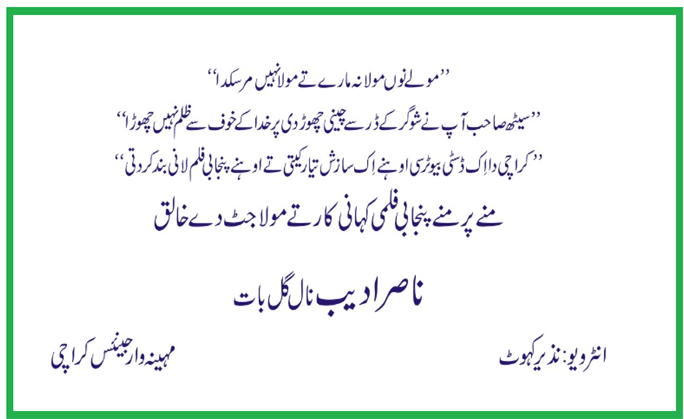
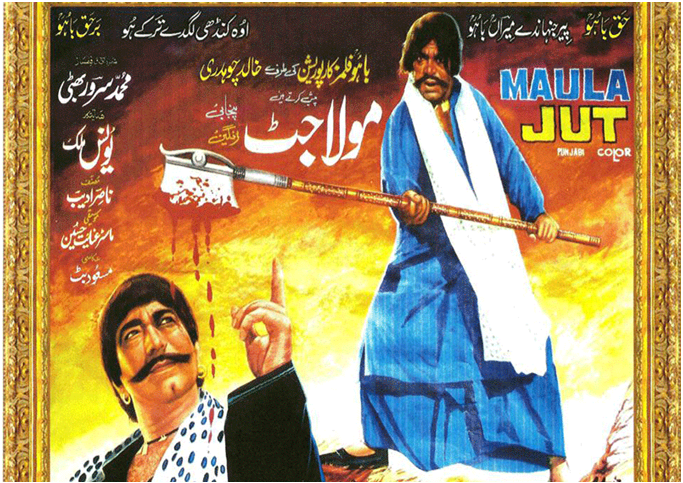
— Courtesy photo
Before Khuda Ke Liye and Waar, films like Maula Jatt marked the industry's resounding success.
With the industry now booming with digital technology, the producer of Maula Jatt, Muhammad
Sarwar Bhatti, has decided to bring the 1979 masterpiece back to the silver screen in Blu-ray
and 3D technology for old fans and the new generation to enjoy.
"The film is in the process of being remastered in London and the conversion will cost us Rs4.5
million," Bhatti told Dawn.
With the number of films releasing with enhanced digital technology, Bhatti is hopeful fans will
love the film's remaster.
"We have just started our Facebook page and are receiving positive response from fans. We have
high hopes that the film will be loved by all," said Bhatti.
There is no confirmed release date at the moment. However, Bhatti said they will have the final
version of the trailer ready to be released in the next six to eight weeks.
Directed by Younis Malik, Maula Jatt depicts the enmity between two men, Maula Jatt (played by
Lollywood legend Sultan Rahi) and Noori Natt (Mustafa Qureshi), with Gujranwala in rural Punjab
as the setting.
The action film was banned for a short time by the government when it was first released. However,
it dominated Pakistani cinema in the 1980s.
Source:DAWN.COM October 17, 2014
LAHORE
The renowned producer and creator of the epic movie Maula Jatt”, Muhammad Sawar Bhatti, has
broken his silence after 29 years with a mission statement that the revival of our long lost moral
values is the only way to save our coming generations from falling into the pit of immoral, non-
productive and destructive activities, and to rise and shine again as a great nation.
The man who gave the world the unforgettable legendary movie “Maula Jatt” which changed the
entire fabric of our society and immortalised two super stars of this country, namely late Sultan
Rahi, and Mustafa Qureshi, poured his heart out to The News after 29 years, in a very heart to
heart frank talk at his residence, with his prodigy and illustrious son Muhammad Muttaqi by his
side on Monday.
“Maula Jatt” was not just a movie to me, Sarwar Bhatti pointed out, “it was a message, a personal
statement about the true character of Punjab, the character full of moral values, chivalry and a
great sense of pride in our centuries old healthy moral values”. “I have been raised with the strong
moral values, the values representing the real Punjab, a Punjab of peace, love and respect for each
other, and that’s what is lacking now”, Sarwar Bhatti maintained. There is a need for a hero, a role
model, which we had in the form of “Maula Jatt” and Noori Natt” back in the 80’s. They were the
personification of our glorious past, custodians of our ethical values.
Sawar Bhatti has not put down his tools yet. Now, he is looking up to and guiding his young and
brilliant son Muttaqi, who is all set to take up the cause of his father in a new garb, a revival of our
glorious traditions, our ethical and moral values of Punjab for our highly intelligent, and brimming
with potential youths who are groping in the dark directionless and confused.
According to Muttaqi, the main reason behind the downfall of our film industry is that we don’t like
to use our mind in creative and analytical thinking and making new concepts. We use all our energies
and abilities in copying the work that has been already done. What film makers did was either they
copied a concept of a film or else made a concept after watching few films and took situations from
each of them and made a new film.
Maula Jatt is the biggest example. After Maula Jatt most film makers started making Maula Jatt
according to their intellect using different names and started using the concept with racist’s approach
and started making films on Gujjars and Arayin and so on. However, they ignored the soul of the
concept of Maula Jatt and took Jatt as a symbol of ethnic superiority and started making the films
promoting and glorifying their own castes. On the other hand, the man who made Maula Jatt was a
Rajpoot and yet Muhammad Sarwar Bhatti made a film on difference between right and wrong
(justice and injustice) using Jatt and Natt as metaphoric symbols.
Muttaqi believes “That’s why Maula Jatt is Maulay Nu Maula Na Maray Te Maula Nai Mar Sakda. And
when most film makers started making films like Maula Jatt, there was a lot of monotony which made
the audience lose interest gradually and then after that, a huge amount of film viewers silently and
subconsciously boycotted the cinema and the cinemas started vanishing. There is no doubt about
Maula Jatt worth getting inspired by, but, getting inspired with good intellect and understanding is
also very important. I used to listen to a lot of intellectuals talking negatively about Maula Jatt, which
is also a success, but what makes their arguments hilarious is that they have a very poor understanding
about films or I would say we have a very bad habit of accepting the opinion that is based on our own
imaginations rather than on facts.
Another issue is with our aesthetics and ethics. I remember when I was studying in NCA and when we
have to make a college project, a short film etc and not for any commercial purposes. If we have to
use someone’s content or any content which we do not own, we used to ask for the permission of the
authority who has the rights. But I have seen in the media industry they used to violate the rights on
daily basis. I have seen people studying abroad and now working here but lacking the basic code of
ethics. Which is also very sad and demoralising for those who own the rights and for those who want
to come up with the new and different ideas? Banners like us can defend their rights but those who are
still struggling couldn’t be able to do the same. They are unable to trust the industries because their
ideas and concepts get stolen even before they go further with them. We talk about change yet every
leader is violating the rights of their own junior members by asking them to tell a good point in the ear
of their leader so their leader should get a high rating for that and yet we say we are fighting for the
rights of the people not even giving a simple basic right to people.
My father, Sarwar Bhatti, wanted me to take over the production house he made in 1978, “Bahoo Films
Corporation” but I refused by saying I want to do justice to the legacy and want some experience in this
field. So after few years of experience I took over our production banner as CEO and me and my father
were silently working on a film “LPD”. I cannot reveal anything about LPD right now because “LPD” is
going to reveal itself gradually but I just want to say that “the world wants to see something different,
so I am deriving sea from the dessert”. I want to add here that it has been said that “Truth is stranger
than fiction” so I am making the strangest truth, not fiction”.
The young filmmaker hopes and wish that the films which are being made these days with or without
the banner of “revival of the film industry” will not make the same mistake and will come up with the
original concepts and ideas. There are a lot of subjects which still haven’t been touched.
Source:DAWN.COM
By Ahmed Sarym
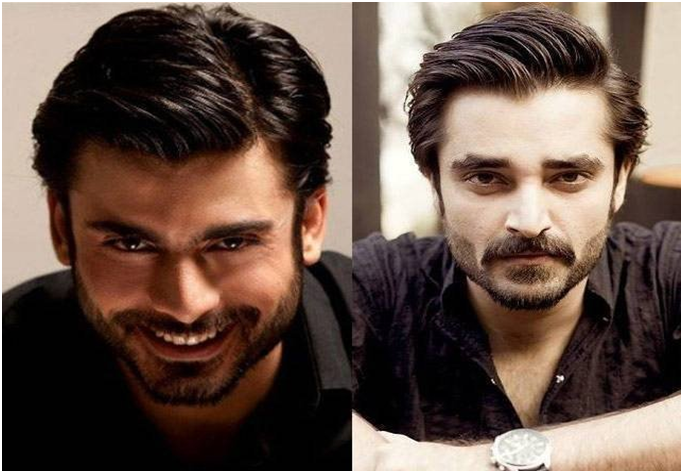
PHOTO: FILE
ISLAMABAD .: Who knew that a small-town boy, hailing from a poverty-stricken family, travelled
to Lahore, and tarried outside the very film-studio he wasn’t allowed to enter then, but comfortably
seats himself now at, before speaking to me of his much-awaited return. Veteran writer Nasir
Adeeb, who completes his 412th film in the coming year, happens to hold the record of being the
only scriptwriter in the world to have so many releases to his credit.
Adeeb dreamt of becoming famous, and after having joined the armed forces, he was told that only
a shaheed (martyr) is honoured with the ‘Nishaan-e-Haider’ (highest military award), and that’s
not the kind of notability he had in mind. And so he very dramatically ran away, and after much
struggle, applied to PTV and was accepted as the Assistant Programme Producer. But just then a
film by his name was announced in Lahore, so he filed a court case, won and stepped foot in what
was then, the magnificent Lollywood. In conversation with The Express Tribune, Nasir Adeeb dishes
out his inspiring voyage into films and revisits his classic.
Most recently, Adeeb launched his autobiography titled Tareekhi Jumlay and already has two sold-
out editions. He sees his documentation as a piece of writing that he owed to himself. “I spent three
years reading and finding myself, and that’s when I came to know that there’re only four things that
God has made Himself, the first being a pen,” he delineates, adding, “I literally had tears in my eyes
when I read this because I consider myself very lucky, to have been blessed with the strength to
write. On the Last Day, when I’m asked of what I made use of this ‘pen’ for myself, I’ll have my
book.”
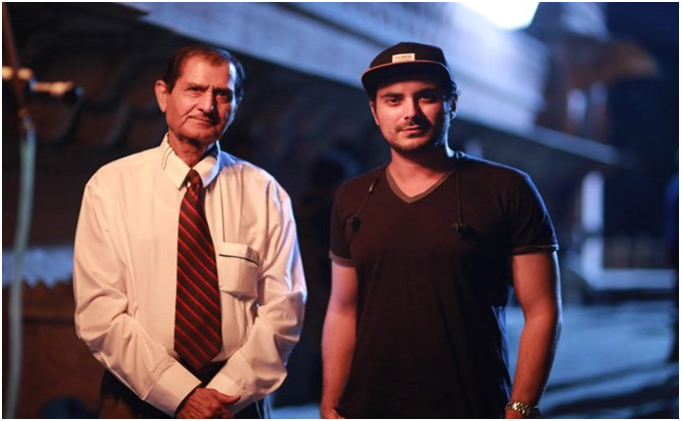
PHOTO: FILE
Rewind to 1975: The release of his first Punjabi film, Wehshi Jatt, Adeeb gave rebirth to regional
cinema in Pakistan; swiftly replacing Urdu-language-films with the much clamorous, yet booming
Punjabi features. It is pertinent to mention that Wehshi Jatt, produced by Azeem Malik and directed
by Hassan Askari was the first film to introduce Adeeb’s character ‘Maula Jatt’. Over the course of the
next few years, Adeeb wrote a handful of movies for various film-makers, around his iconic characters,
‘Maula’ and ‘Noori’. While the doom of local cinema is often attributed to the violent and vulgar
content that replaced quality and refinement, that was brought about in the decades before, Nasir
believes otherwise – and refreshingly, acknowledges the new crop of talent for reanimating the
fraternity.
“In 1988, I had predicted the downfall of our film industry because I saw the lack of respect. In our
society, it was a taboo to be associated to cinema. Till now, no father would ever, proudly speak of
his daughter being a great dancer or an artist, or his son, a choreographer or actor,” he exclaimed.
“And so when nobody ends up leading a settled life, the industry naturally declines. Today, our
society has owned cinema and that’s because actors are coming from respectable backgrounds.
Actresses no longer belong to red-light districts.”
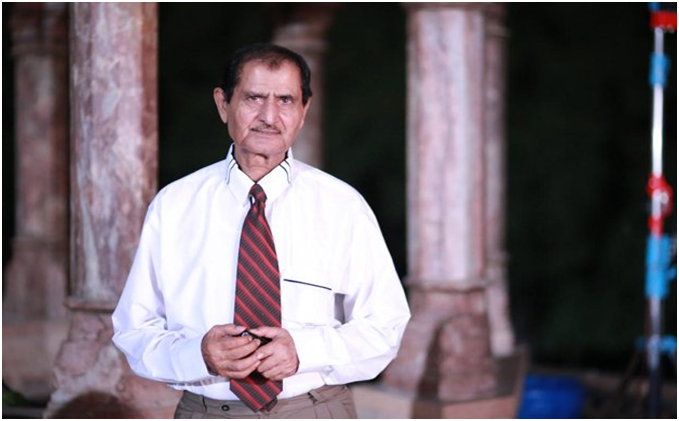
PHOTO: FILE
After a decade, according to the Registration Act in Pakistan, the rights of characters in a film
return to the writer, and Nasir Adeeb makes the most out of that, officially handing over the
rights of his iconic dramatis personae, ‘Maula Jatt’ and ‘Noori Natt’ amongst others to director
Bilal Lashari and Executive Producer Ammara Hikmat, CEO Encyclomedia, for its anticipated reboot.
“Bilal is the one who came to me with this idea and I was very shocked, because he doesn’t speak
in Punjabi at all, but wants to reboot the original film – but in Punjabi, and the film is set during an
era he, himself hasn’t witnessed,” he began of his early encounter with the Waardirector. “And it’s
all the more interesting to know that our producer, Ammara and none of Bilal’s assistants converse
in Punjabi either. Knowing Bilal, one can expect him to set trends and break norms. Any ordinary
film-maker wouldn’t dare putting his stakes on a Punjabi language film after directing a blockbuster
hit. His regard for our language and culture is what brought me into this project.”
However, Adeeb was all praises for the makers and their devotion towards helming a classic that he
promises to be “logical” yet doesn’t lose its gandaasa essence, something he found missing back in
the day. “It is after working on Maula Jatt that I’ve realised what film-makers actually do. It would’ve
been amazing to have started off with Bilal and Ammara; they’re so passionate about the film,” he
shares.
“Dair ayad, durust ayad (it’s taken a bit of time to reach there, but I have arrived), and that will
hopefully reflect by the numbers it generates at the Box Office.”
It’s surprising to see Adeeb evolve and adapt to the new wave of a cinema that is equal parts conven-
tional entertainment and modern sensibilities. Despite having a career spanning over four decades,
Adeeb’s humility and progress is laudable. However, he is also well aware of Maula Jatt’s cult-position
in films and sees the transformation of his characters in collaboration with Lashari as an opportunity
to introduce himself to the younger and more contemporary audience.
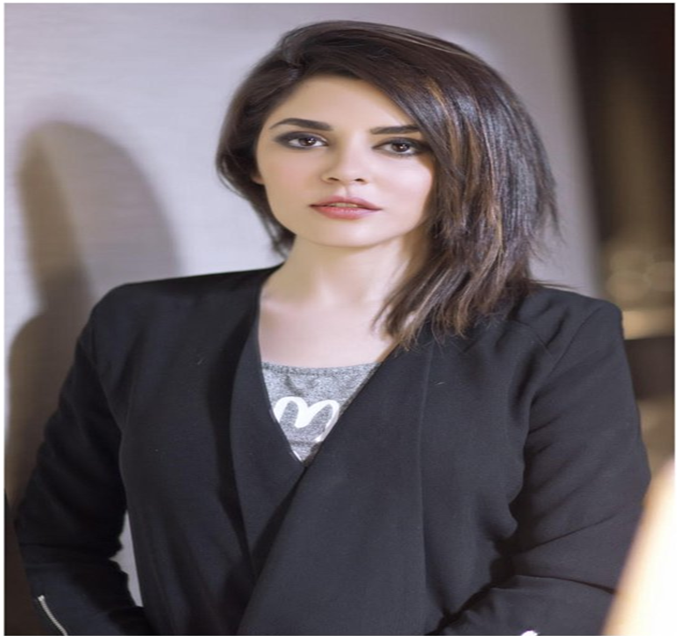
PHOTO: FILE
“I think I’m starting from zero, I feel it’s my first film and maybe that’s why I look up to Bilal and
his vision. In a way, it’s my entry to new-age cinema and this is my chance to prove myself,” he
maintains. “When you first visit the Taj Mahal, you look at it as a building, but it’s once you’ve seen
it that you realise what it symbolises and how it was Shah Jehan’s token of love for his most beloved
wife. Maybe after watching Maula Jatt, people would want to know what I hold.”
He continued of the franchise’s epic run at the movies and the Punjabi accent that returns to the fore
with Lashari’s directorial. “There are five Bollywood adaptations of Maula Jatt as well. Four of which
failed, so Dharmendra, who starred in them, eventually called me and I wrote Ghayal. He then asked
me why the earlier films had tanked, even though they had excellent production values – but the truth
is that it’s actually the dialect that makes a film like this a hit.”
Starring, the most celebrated actors in the country, Fawad Khan takes the lead as Maula Jatt, whilst
Hamza Ali Abbasi wears the antagonist, Noori Natt’s hat with aplomb; Mahira Khan and Humaima
Malick also feature as the film’s leading ladies and we can barely wait to see what the renowned quartet
have in store. Unlike other writers, Adeeb seems well-engaged in the film’s production stage as well,
allowing its team to grasp from the story innovator himself.
“I remember this one scene where the late Sultan Rahi delivered a very powerful dialogue, which was
followed by Noori Natt’s in the original, where he says, ‘Oye Jatta’, which Mustafa Qureshi never got
right,” Adeeb chuckled. “So Hamza does speak in Punjabi, but Fawad, Mahira and Humaima don’t, but
they understand that and are very easy to work with. They pick up the accent I narrate to them very
well and are extremely hard-working. That’s all that matters.”
He very fondly recalls the good ol’-days of the gandaasa glory, but has evidently gelled in well with the
juvenile crowd of the fraternity. He draws parallels between Maula Jatt and James Bond, and hopes its
forthcoming installment crosses the 100 Crore mark, setting new records. Rational, seemingly pragmatic
and clearly vehement about cinema, Maula Jatt is one film that we anticipate; it goes without saying.
SOURCE:DAWN.COM September 16, 2017
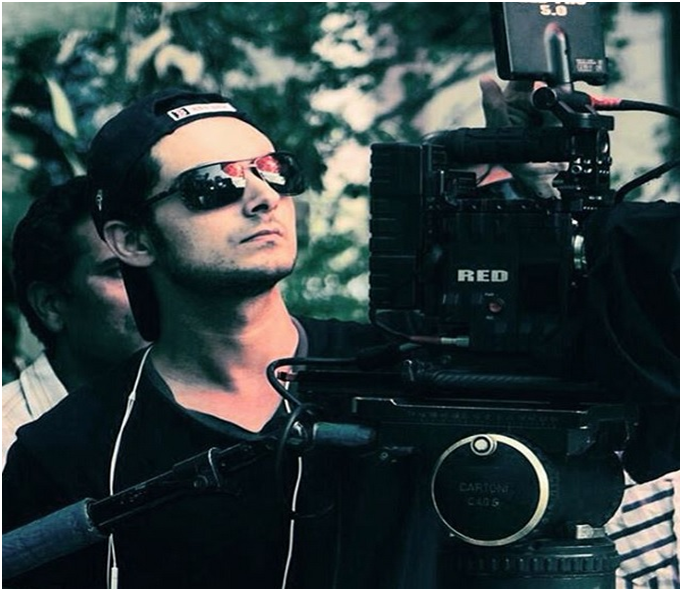
Pakistan’s leading director Bilal Lashari is all set to surprise us again, not with box office returns
but with the project that he has gotten his hands on. Lashari earlier put the arms and ammunition
of Pakistan army to stylistic use, and will now be giving a new identity to Gandasa films with a
multi-million dollar remake of Maula Jatt.
Maula Jatt 2 has begun shooting, the excitement has just doubled.
But wait!
Lashari wants to clarify something. The ‘Waar’ director posted Facebook to announce that his up-
coming feature is not ‘Maula Jatt 2’, not a sequel of the cult classic, nor a remake of it either.
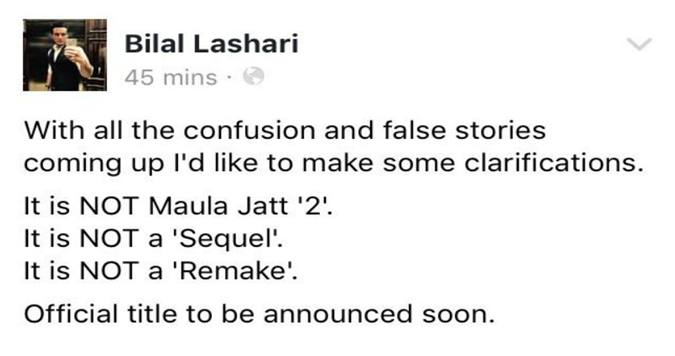
The film is a co-production with an American production house, the name which hasn’t been disclosed
as yet and will have a budget in the millions of dollars. From a war epic to a new brand of Gandasa
films; Lashari is taking some huge steps and even huger risks. Traditional Gandasa films have been
looked down upon by modern viewers due to a lack of content, but Lashari is not only aiming to stay
true to the spirit of the originals, but he is also determined to make it palatable for contemporary
audiences.
SOURCE:Pakistan Today, JANUARY 22, 2017 BY WEB DESK
MAULA JATT (1979) - SULTAN RAHI, MUSTAFA QURESHI, ASIYA
Send email to nazeerkahut@punjabics.com with questions, comment or suggestions
Punjabics is a literary, non-profit and non-Political, non-affiliated organization
Punjabics.com @ Copyright 2008 - 2018 Punjabics.Com All Rights Reserved
Website Design & SEO by Webpagetime.com